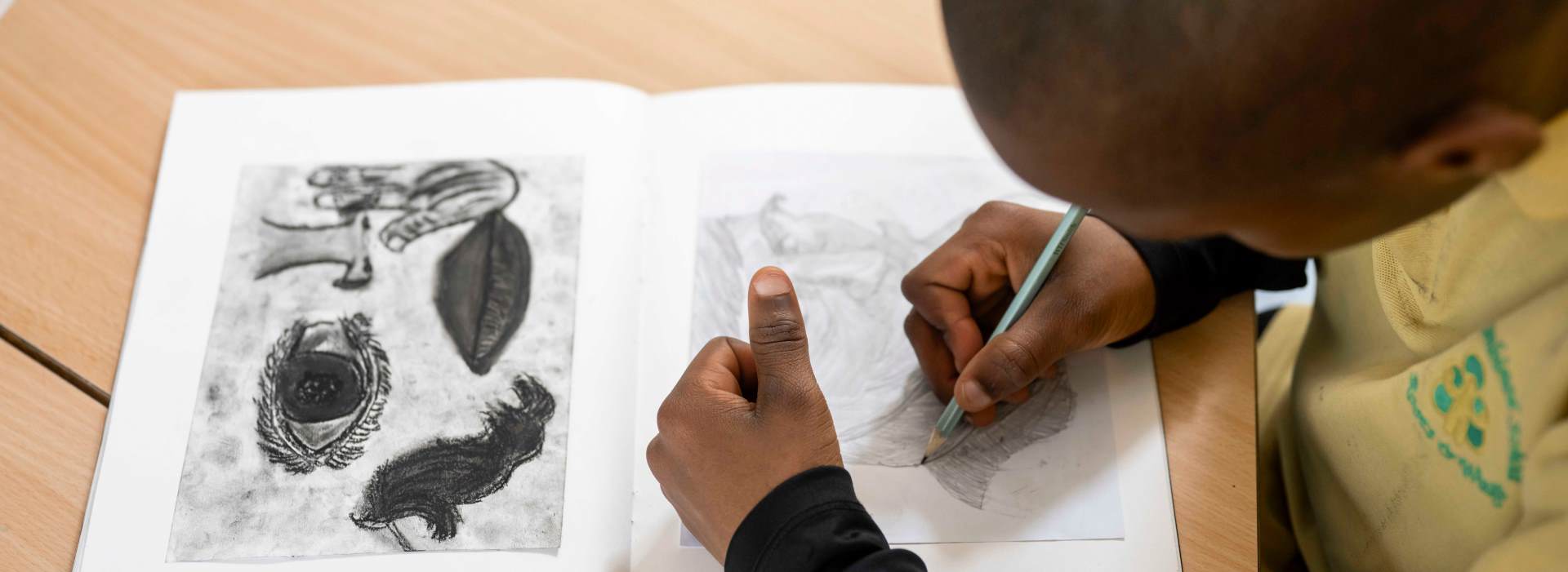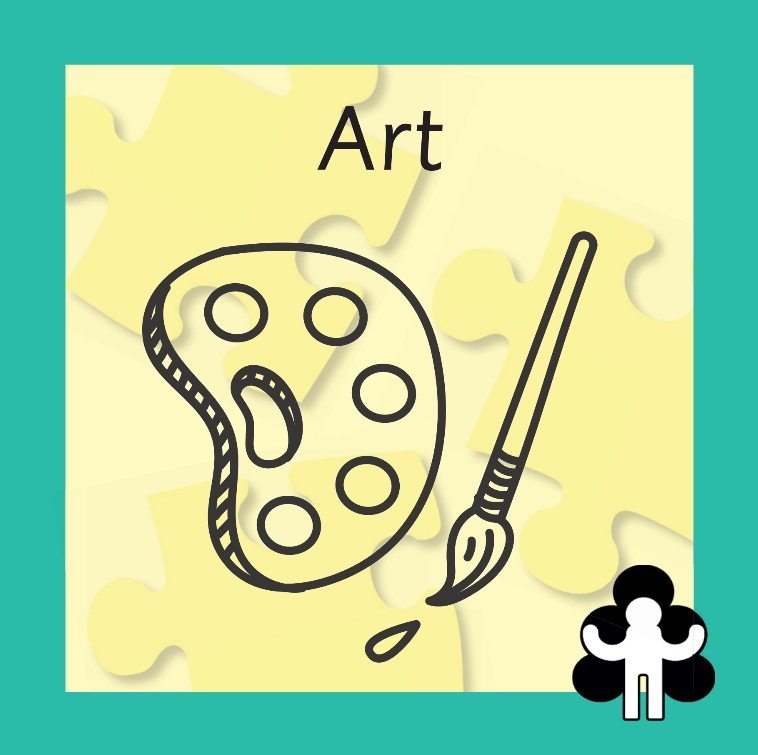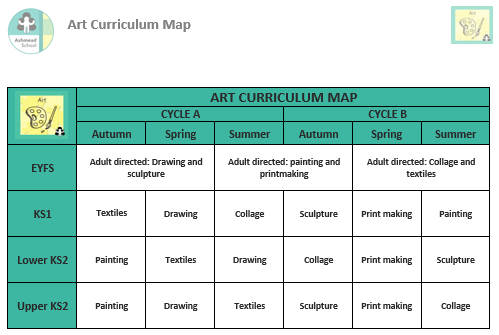
Art

Intent
At Ashmead School, our artists, crafters and designers are entitled to a high-quality art curriculum which develops their knowledge and skills to inspire creativity and self-expression. Pupils will develop their artistic skills, methods and techniques in drawing, painting, sculpture, print making, textiles and collage through practical opportunities and theoretical knowledge equipping them with the knowledge to experiment, invent and create their own works of art, craft and design. We want our pupils to appreciate great artists, craft makers and designers, as well as developing an understanding of historical and cultural art forms to represent and complement our diverse school community. Pupils will learn that art is continually evolving, therefore arming them with the skills to understand and think critically about how art is studied, discussed and judged which will enable them to draw comparisons, develop interest and curiosity about art, and prepare them as they continue their journey as young artists.
Art Overview

Within each unit, mark making and watercolour techniques play a vital role in early artistic expression while simultaneously supporting the development of handwriting skills. These creative activities help children build fine motor control, hand–eye coordination, and the muscle strength needed for a confident pencil grip. Through exploring lines, shapes, and patterns, pupils not only develop their ability to express themselves visually but also rehearse the fundamental movements required for letter formation. By assigning meaning to their marks, children begin to understand that symbols can represent and communicate ideas. As such, these art-based practices lay a strong foundation for both creative growth and the physical and cognitive skills essential for handwriting.
Implementation
Our curriculum is organised into a progression model, with the long-term overview identifying the skills, types of knowledge, concepts and vocabulary to be taught in a sequentially coherent way. Our progression documents consider the rationale for how core knowledge is progressively built upon through spaced practice from EYFS to Year 6.
In EYFS, expressive arts and design develops pupils artistic and cultural awareness to support their imagination and creativity. Core artistic skills are taught through a mixture of adult directed and child-initiated activities focusing on the six areas of making identified to ensure pupils are prepared for the transition to KS1. Pupils are exposed to the work of artists for them to appreciate that art comes in many forms and that, there are different styles. Pupils are given opportunity to explore materials and techniques through a hands-on approach, exploring material tools and techniques, as well as experimenting with the formal elements of art.
In KS1, pupils build on their learning from EYFS, refining their core skills through a more structured approach. Pupils dive deeper into contextual knowledge through artist studies and are given opportunity to think like an artist to create their own unique artist creations. Pupils learn about the differences and similarities between different practices and disciplines. Pupils are taught to use their sketchbooks to record thoughts, experiment and share their ideas.
In KS2 pupils improve their mastery of art and design techniques, and further contextual learning through the study of great artists, architects and designers in history which act as stimulus for their own creative ideas. In KS2, pupils continue to develop their use of sketchbooks to record their observations and use them to review and revisit ideas. Pupils begin to use sketchbooks more freely to creatively present their thinking through visual notes. They are encouraged to take ownership of their sketchbooks, looking back at their ideas and progress over time.
The National Society for Education in Art and design recognizes 12 different areas of making. We have selected six ‘areas of making’ or practical knowledge to ensure sufficient depth and progression: Drawing, painting, sculpture, printmaking, collage and textiles.
Within each area of making, pupils will progressively use sketchbooks and visual literacy to generate ideas, create and evaluate their works of art.
The formal elements of art are also progressively mapped. They are: Colour, line, shape, form, tone, pattern and texture. The formal elements of art are referred to within each area of making although greater emphasis may be identified as an area of focus.
Key questions have been designed to enable pupils to learn that art is not fixed, but fluid and dynamic. The questions help pupils understand the concept of quality, value and purpose of art as well as the different ways of working. Questions aim to focus teachers planning and pupils’ responses as to how artists learn and communicate their ideas ensuring curriculum content is diverse.
Pupils practical and disciplinary knowledge is also balanced with theoretical knowledge. A range of artists, craft-makers and designers are identified alongside traditions, cultural, social and historical themes within our long-term plan. Concepts such as portraiture, landscape and architecture, and nature and environment have also been identified to further support pupils in gaining a greater understanding of diversity and culture.
Pupils are given sufficient time to revisit prior learning and practice new techniques to prevent cognitive overload. In the early stages of learning, activities isolate techniques and focus on the formal elements of art, within context and around a given stimulus. Pupils are given the opportunity to evaluate the work of others to review techniques, formal elements or art, apply knowledge of skill, but also gain ideas. Pupils are then able to make informed choices when planning, creating and evaluating their own works of art. Pupils will also have the opportunity to work individually and collaboratively.
Impact
Our artists and designers will be confident and able to talk about what they have learnt in art using subject specific vocabulary. Pupil voice will demonstrate that pupils enjoy art and are able to recall their learning over time. Pupils sketch books and work demonstrates that art is taught at an age appropriate standard across each year group with opportunities planned in to include all. Work demonstrates pupils are acquiring knowledge, skills and vocabulary in an appropriate sequence. Outcomes will be ongoing and not limited to the final outcome within a unit.







